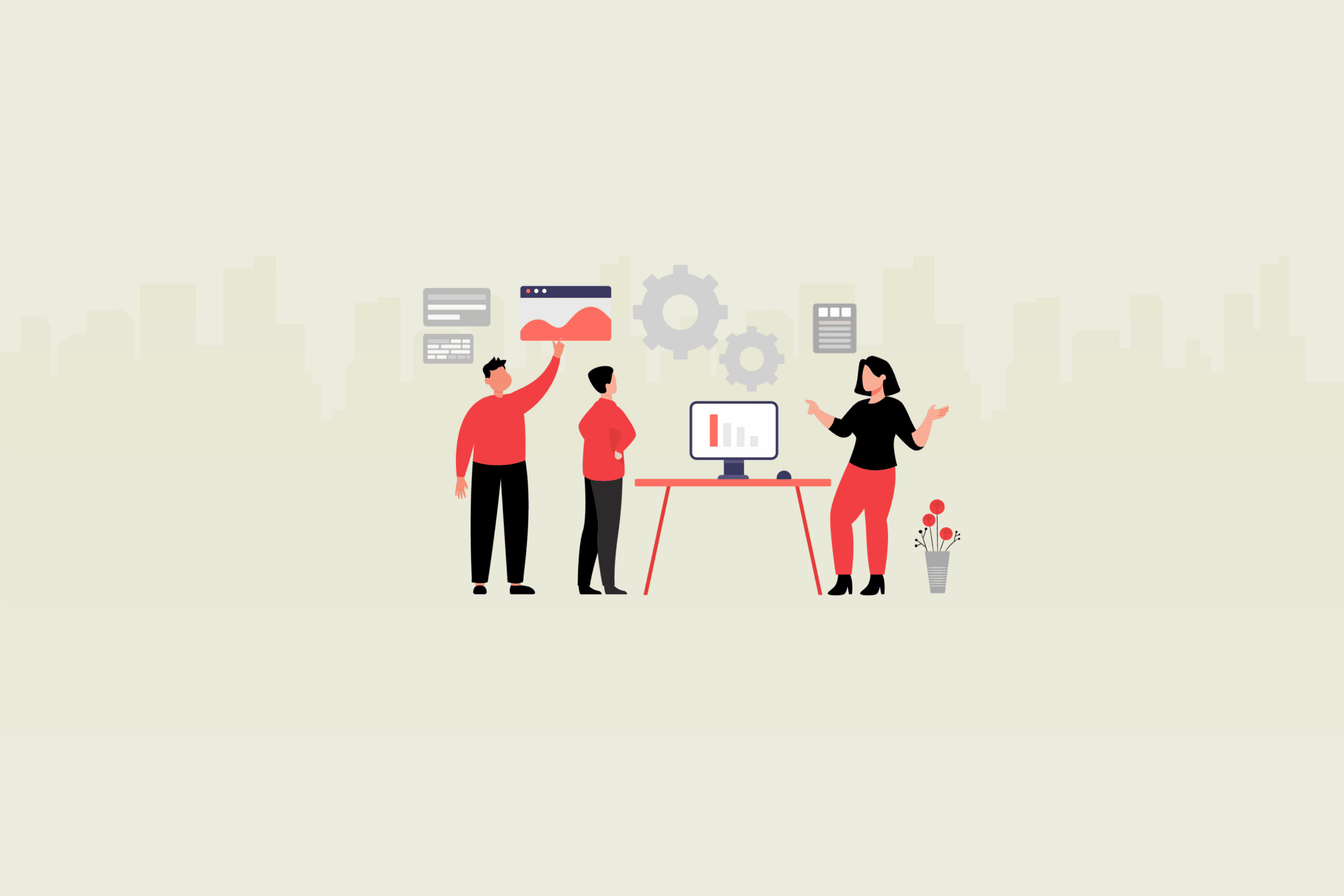In today’s fast-paced and competitive business world, organizations are constantly seeking ways to boost their return on investment (ROI). While many factors contribute to this equation, one often underestimated aspect is the performance and development of your workforce. Your employees are your most valuable assets, and their growth directly impacts your company’s success.
According to linkedin, 60% of in-house recruiting pros predict their employer branding investments will increase this year due to employee assessments.
One powerful tool in this context is employee assessments. These assessments are more than just a routine HR process; when done right, they can be a game-changer for your organization’s productivity, profitability, and overall success. In this blog, we will delve deep into the world of employee assessments and explore how you can harness their potential to maximize your ROI.
Join us on this journey as we uncover the significance of employee assessments, the art of choosing the right assessment methods, and the numerous ways in which they can benefit your business. From identifying skill gaps to tailoring development plans and measuring their impact, we’ll provide you with the insights you need to leverage employee assessments as a strategic advantage in your pursuit of a higher ROI.
So, let’s get started and unlock the full potential of your workforce through the power of employee assessments.
The importance of employee assessments
Employee assessments are more than just a human resources formality; they are a vital component of your organization’s success. In the quest to maximize your ROI, it’s crucial to understand why these assessments are essential. They serve as a foundation for informed decision-making, growth, and employee development. Let’s delve into the significance of employee assessments and why they should be a fundamental part of your business strategy.
In an era where competition is fierce, and businesses must constantly adapt to market changes, having a skilled and motivated workforce is paramount. Employee assessments are the tools that allow you to unlock the full potential of your employees. They provide insights into their skills, strengths, and areas for improvement. With this information at your disposal, you can make decisions that have a direct impact on your organization’s ROI.
These assessments can help identify high-potential employees, which is invaluable in succession planning and leadership development. They also assist in recognizing employees who may require additional training or support, enabling you to proactively address skill gaps. In addition, they play a crucial role in fostering a culture of continuous improvement and learning within your organization.
Furthermore, employee assessments contribute to employee engagement and job satisfaction. When employees see that their skills and contributions are recognized and valued, they tend to be more motivated and committed to their roles. This, in turn, leads to increased productivity and efficiency.
In essence, employee assessments lay the groundwork for a more productive, engaged, and skillful workforce, directly impacting your organization’s bottom line. They are a strategic investment that can yield substantial returns over time. As we continue our exploration, we will delve deeper into the different facets of employee assessments and how you can harness their potential to maximize ROI.
Choosing the right assessment methods
Once you understand the importance of employee assessments, the next step is to choose the right assessment methods. Not all assessments are created equal, and it’s crucial to select the ones that align with your company’s goals, culture, and the specific insights you seek.
Employee assessments come in various forms, including performance evaluations, skill assessments, personality tests, and 360-degree feedback, among others. Here, we will explore the process of choosing the most appropriate methods for your organization.
Identify your objectives: Start by defining what you want to achieve with employee assessments. Are you primarily focused on improving job performance, identifying leadership potential, or addressing skill gaps? Your objectives will guide your choice of assessment methods.
Consider organizational culture: Assessments should align with your company’s culture. For instance, a tech startup might prioritize creative problem-solving skills, while a financial institution may value attention to detail and risk assessment. Ensure that your assessments reflect these cultural nuances.
Balancing quantitative and qualitative data: Different assessments provide varying types of data, ranging from quantitative metrics to qualitative insights. Choose a mix that gives you a comprehensive view of your employees’ abilities and potential.
Validity and reliability: Assessments should be scientifically validated and reliable to ensure that the results are accurate and consistent. Look for assessments that have a proven track record in predicting the desired outcomes.
Customization: Ideally, assessments should be tailored to your organization’s specific needs. Look for methods that can be customized to address the unique challenges and opportunities within your company.
Compliance and ethical considerations: Ensure that the assessments you choose comply with legal and ethical standards. You should also consider the privacy and consent of your employees when implementing assessments.
Training and resources: Evaluate whether you have the resources and expertise to administer the chosen assessments effectively. Training your HR team or seeking external expertise may be necessary.
Choosing the right assessment methods is a critical step in maximizing ROI with employee assessments. It ensures that the insights gained are not only relevant but also actionable. In the subsequent sections of this blog, we will delve into the practical aspects of implementing these assessments and using the data to drive meaningful changes in your organization.
Evaluating employee performance
Employee assessments play a crucial role in objectively measuring the performance of your workforce. This evaluation is not just about tracking productivity but also about identifying areas where employees excel and where improvement is needed. In this section, we’ll explore the importance of evaluating employee performance and how it contributes to maximizing ROI.
Objective performance metrics: Employee assessments allow you to establish objective performance metrics that go beyond subjective judgments. By quantifying performance through metrics such as sales targets, project completion rates, or customer satisfaction scores, you gain a clearer picture of each employee’s contribution.
Regular feedback and communication: Employee assessments are an opportunity for ongoing feedback and communication. Regular check-ins and reviews provide employees with a chance to understand how their performance aligns with the company’s goals and expectations.
Identifying top performers: Assessments can help identify top performers within your organization. These individuals are often the ones who can be groomed for leadership roles, potentially saving the costs and time associated with external hiring.
Supporting struggling employees: On the other end of the spectrum, assessments can pinpoint employees who may be struggling. This is an opportunity to provide additional training, resources, or coaching to help them reach their full potential.
Fairness and equity: Employee assessments ensure fairness and equity in performance evaluations. By using consistent assessment criteria, you mitigate potential biases and ensure that employees are evaluated on their merits.
Motivation and goal alignment: Employees are more motivated when they understand how their work contributes to the organization’s success. Employee assessments reinforce this alignment by showing how individual contributions fit into the larger picture.
Data-driven decisions: Objective assessment data supports data-driven decision-making. This is essential for recognizing which employees are the best fit for various roles, projects, and development opportunities.
Evaluating employee performance is not just about passing judgment; it’s about empowering your workforce to thrive. When employees know that their hard work is recognized and that there is a path for growth and development, they become more engaged and committed. This, in turn, directly impacts your organization’s ROI.
In the upcoming sections of this blog, we will explore how assessments can help identify skill gaps, tailor development plans, and measure their impact on your organization’s ROI.
Identifying skill gaps
One of the powerful benefits of employee assessments is their ability to reveal skill gaps within your workforce. Skill gaps can be detrimental to your organization’s efficiency and effectiveness. In this section, we’ll delve into the importance of identifying and addressing these skill gaps and how it contributes to maximizing ROI.
Strategic workforce planning: Skill gap analysis enables strategic workforce planning. It helps you ensure that your organization has the right talent with the right skills to meet current and future business objectives.
Proactive problem-solving: By identifying skill gaps in advance, you can proactively address them before they become critical issues. This prevents disruptions in productivity and ensures a more efficient operation.
Customized training and development: Assessments highlight the specific skills that employees lack. This information is invaluable in tailoring training and development programs that address these gaps effectively.
Improved performance: Addressing skill gaps leads to improved performance. When employees have the skills needed to excel in their roles, they are more likely to meet and exceed performance expectations.
Reduced turnover: When employees see that your organization is invested in their growth and development, they are more likely to stay with your company. This reduces turnover, which can be a significant cost savings.
Staying competitive: In rapidly evolving industries, staying competitive often hinges on having the latest skills and knowledge. Identifying skill gaps ensures that your workforce remains competitive and adaptable.
Enhanced innovation: A workforce with diverse skill sets can drive innovation within your organization. Addressing skill gaps opens doors to new ideas and approaches.
Identifying skill gaps is not a one-time effort but an ongoing process. It’s about ensuring that your employees have the skills needed to perform at their best, adapt to changing circumstances, and contribute to your organization’s success. In the next sections of this blog, we will explore how you can use this information to tailor development plans, thus further enhancing your ROI.
Tailoring development plans
Once skill gaps are identified through employee assessments, the next crucial step is tailoring development plans to address these gaps effectively. Customized development plans not only empower your employees but also contribute to maximizing your organization’s ROI. In this section, we’ll explore the importance of creating personalized development plans.
Individualized growth: Employee assessments provide insights into each individual’s strengths and weaknesses. This information allows you to create development plans that are tailored to the specific needs and aspirations of your employees.
Alignment with business goals: Development plans can be aligned with your organization’s overall business goals. This ensures that employee growth directly contributes to the achievement of these goals, enhancing your ROI.
Focused learning: Customized development plans focus on the skills that are most relevant to an employee’s role. This targeted approach means that employees spend their time and effort on learning and development that directly impacts their performance.
Motivation and engagement: When employees see that their organization is invested in their personal and professional growth, they tend to be more motivated and engaged. This commitment positively affects their performance and productivity.
Tracking progress: Development plans provide a clear path for employees to follow. This makes it easier to track their progress and evaluate the impact of development efforts on performance and ROI.
Leadership development: For high-potential employees, personalized development plans can pave the way for leadership roles. This saves the costs associated with external hiring and helps you retain top talent.
Continuous improvement: Customized development plans foster a culture of continuous improvement within your organization. As employees grow and develop, your organization becomes more competitive and adaptable.
Feedback and coaching: Development plans often include regular feedback and coaching, which are valuable tools for improving employee performance and addressing skill gaps.
Creating personalized development plans isn’t just about helping employees improve their skills; it’s about investing in their potential and aligning their growth with the success of your organization. In the subsequent sections of this blog, we will explore how to measure the impact of these development plans on your ROI, providing you with a holistic view of their value.
Measuring the impact
Measuring the impact of employee assessments and development plans on your organization’s ROI is a crucial step in the process. Without tangible evidence of their value, it can be challenging to justify the resources and time invested in these initiatives. In this section, we’ll explore the importance of measuring the impact and how it contributes to maximizing ROI.
Data-driven decisions: Measuring the impact of employee assessments and development plans is a key driver of data-driven decision-making. It allows you to evaluate the effectiveness of these initiatives and make adjustments as needed.
Roi calculation: By tracking and measuring changes in performance, productivity, and other relevant metrics, you can calculate the return on investment. This quantifiable figure provides a clear picture of how employee assessments and development plans impact your bottom line.
Identification of success stories: Through impact measurement, you can identify success stories – individuals or teams that have significantly improved their performance. These success stories can serve as inspiration and examples for others.
Feedback for improvement: Impact measurement can reveal areas where assessments and development plans can be refined or expanded. This feedback loop ensures that these initiatives are continually optimized for maximum impact.
Employee satisfaction and retention: Surveys and feedback from employees can be part of the impact measurement process. High levels of employee satisfaction and retention are indirect indicators of the success of your initiatives.
Alignment with strategic goals: Impact measurement demonstrates how employee assessments and development plans align with your organization’s strategic goals. It shows how these initiatives contribute to the overarching mission of your company.
Long-term benefits: Beyond immediate ROI, measuring the impact can uncover long-term benefits such as leadership development, a more adaptable workforce, and an enhanced organizational culture.
Competitive advantage: Companies that effectively measure the impact of their initiatives gain a competitive advantage. This knowledge allows you to adapt and improve more rapidly than competitors.
Measuring the impact of employee assessments and development plans is the final piece of the puzzle in realizing their full potential. It transforms these initiatives from theoretical concepts into practical tools that directly influence your organization’s success and ROI. As you continue your journey in leveraging employee assessments, remember that the data you gather will be invaluable for making informed decisions, driving growth, and staying competitive in today’s dynamic business landscape.
Conclusion
By investing in employee assessments, you are investing in your people, and this investment pays dividends in terms of performance, development, and, ultimately, the bottom line. The significance of choosing the right assessment methods cannot be overstated. These methods provide valuable insights into the skills, abilities, and potential of your employees. Armed with this information, you can make informed decisions and tailor development plans that empower your workforce to excel.
Measuring ROI can be challenging, but with the right metrics and data, it becomes feasible. Employee assessments enable you to track progress, and over time, you can witness the tangible impact they have on your organization. It’s not just about the assessment process; it’s about the continuous growth and development of your workforce.
In conclusion, if you seek to maximize your ROI, consider employee assessments as a strategic tool in your arsenal. The potential is immense, and the rewards are substantial. As you embark on this journey, remember that your employees are not just workers; they are the backbone of your success. By assessing, nurturing, and harnessing their talents, you are taking a significant step towards achieving the ROI you desire. So, don’t wait; start your journey towards maximizing your ROI with employee assessments today.
Optimize your hiring process with testlify and get all the pre-recruitment assessments available at one place. Want to know more about us? sign up for free.








